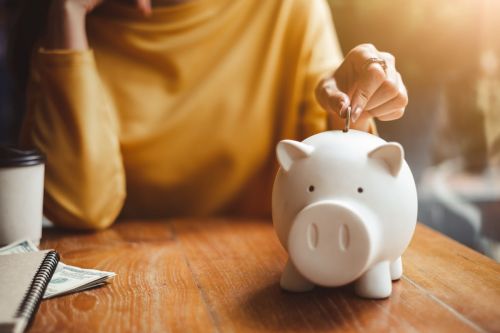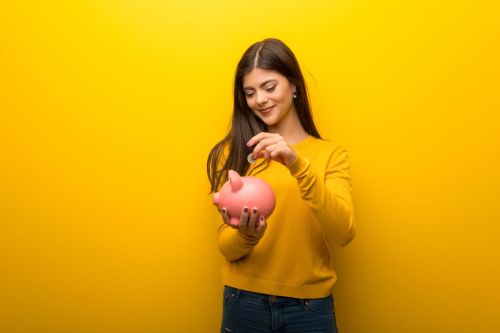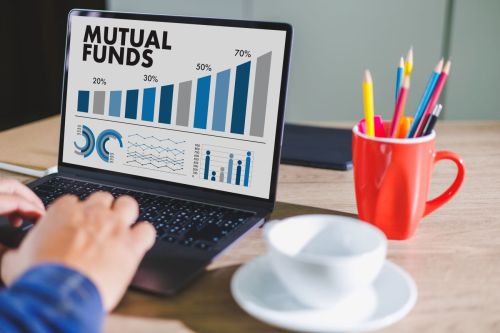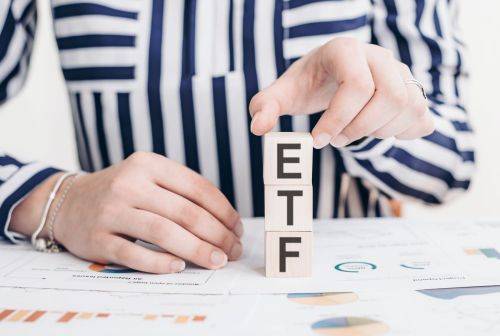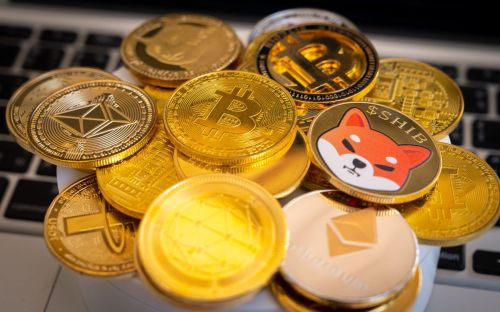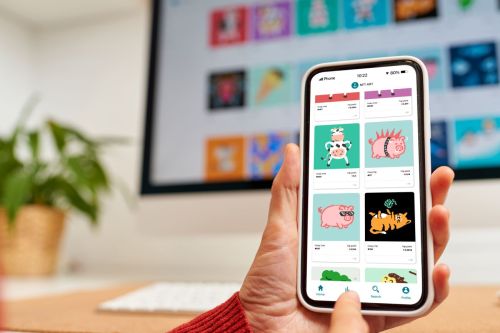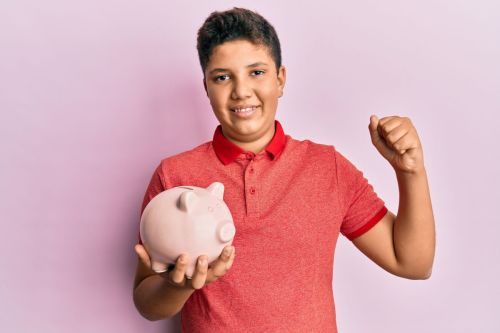Cryptocurrency for Teens: A Guide to Investing in Crypto

How does cryptocurrency work? Where does it come from? How do you buy it, trade it, or use it to make a purchase (wait—can you even use cryptocurrency to make a purchase?). It isn’t that there’s a lack of information about crypto out there, it’s that there’s so much of it. From YouTubers to social media influencers to magazines and TV news channels, crypto is a topic that’s talked about on a daily (maybe even hourly) basis.
Without knowing the basics, trying to keep up with the conversation could make you feel like an overused head-exploding emoji when what you want to be is the cool, calm, sunglasses-wearing, understanding crypto emoji. Great news: You can be that emoji. We can help.
Here are the cryptocurrency fundamentals you and your teen need to know in order to keep up with this ever-evolving financial technology.
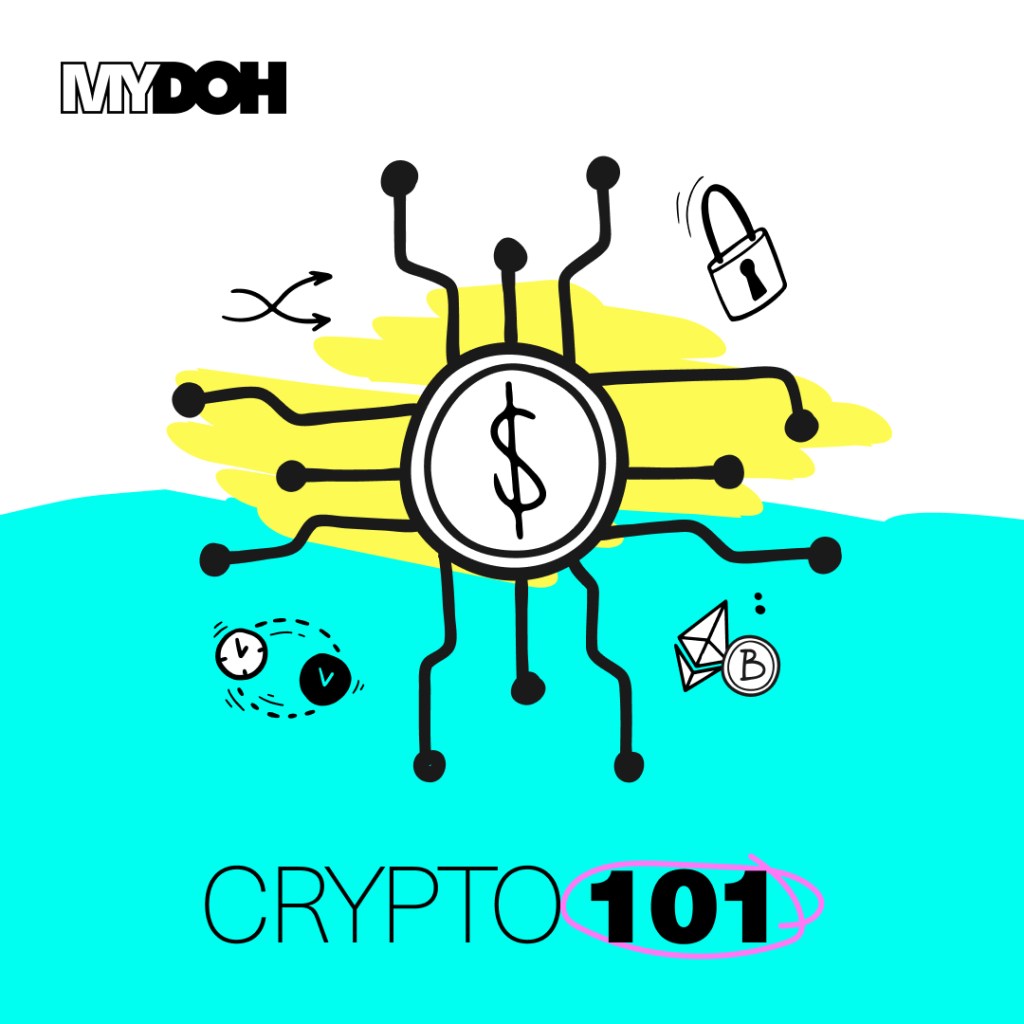
Key takeaways
- Cryptocurrencies are digital tokens or coins that live on an online ledger called a blockchain.
- A blockchain records and logs the buying and selling of crypto.
- Unlike traditional currencies such as the Canadian dollar, crypto has no centralized, regulating authority. Though they do fall under security laws.
- Crypto coins are created through a process called mining, an energy-consuming activity that involves high-level computational mathematics.
- Cryptocurrencies you may have heard of include Bitcoin, Ether, Binance Coin, Tether token, and Dogecoin.
- The buying and selling of crypto can be done on a crypto exchange or through a cryptocurrency broker. Canadians must be at least 18 years old to open an account.
- Cryptocurrencies could be a risky investment because of their rapidly fluctuating monetary value.
What is cryptocurrency?
Cryptocurrency is simply a form of currency that exists digitally. Cryptocurrency uses cryptography (code) for transactions conducted digitally without a central, regulating authority like the Bank of Canada overseeing things. Instead, a record of these buying and selling transactions is documented on something called a blockchain (keep reading; we’ll explain what that is, too). So, cryptocurrency is a coded kind of digital currency which exists digitally on a blockchain.
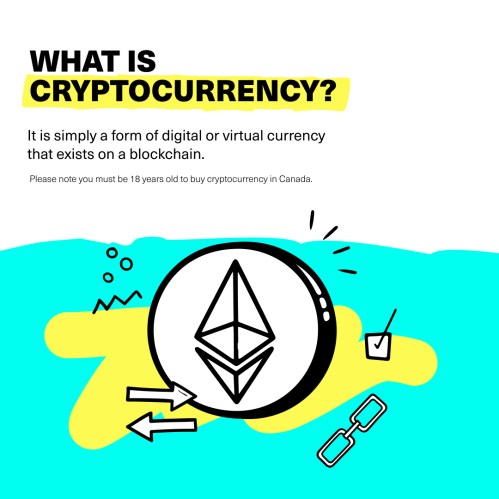
How does cryptocurrency work?
While there’s no shortage of celebrities talking about cryptocurrency, you probably want your teens to get a more detailed and less star-studded definition, right?
Let’s start with how this currency is created in the first place, through crypto mining. The image of an old-timey miner in a black-and-white movie venturing into a tunnel with a headlamp and a pickaxe doesn’t apply here. Instead, this kind of mining requires powerful computers, complicated math problems, and a lot of electricity. In 2021, it was reported that the electricity needed annually to make Bitcoin, a type of crypto, was equal to the electricity used by all of Finland…in an entire year!
But buying and selling crypto doesn’t require this kind of computing power. It can be done on a smartphone! Once mined, coins are distributed on the blockchain, and buyers and sellers can use this system to make transactions. Buyers have a crypto wallet where their coins are stored, and records of buying and selling are recorded digitally on the blockchain ledger.
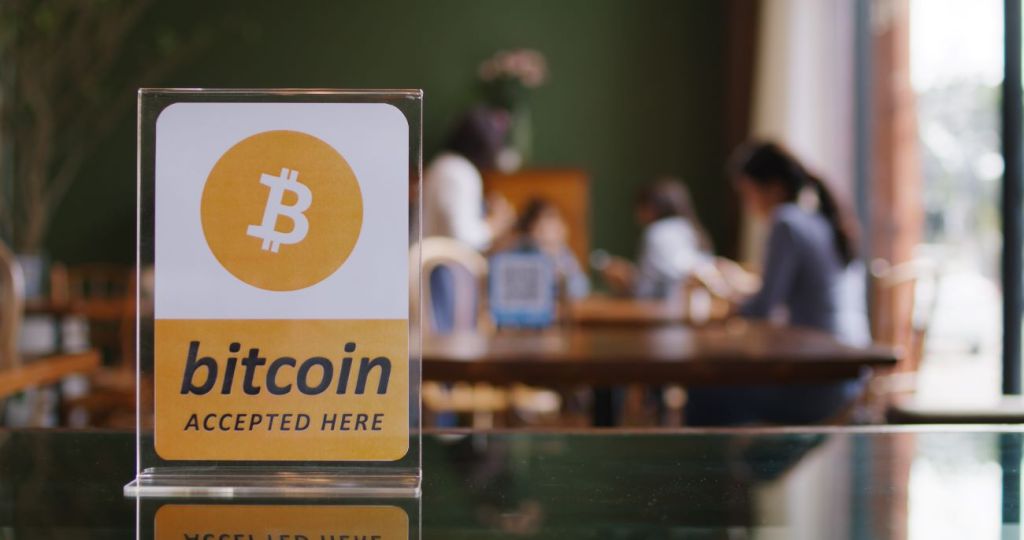
What is a blockchain?
Blockchain is the legitimately cool tech that makes crypto possible. In super-simplified terms (for those of us who aren’t computer scientists), blockchain technology acts as a record or ledger for crypto transactions by digitally recording the many, many buying and selling activities in a way that everyone can see. Like we said before, cryptocurrencies operate and exist on a blockchain.
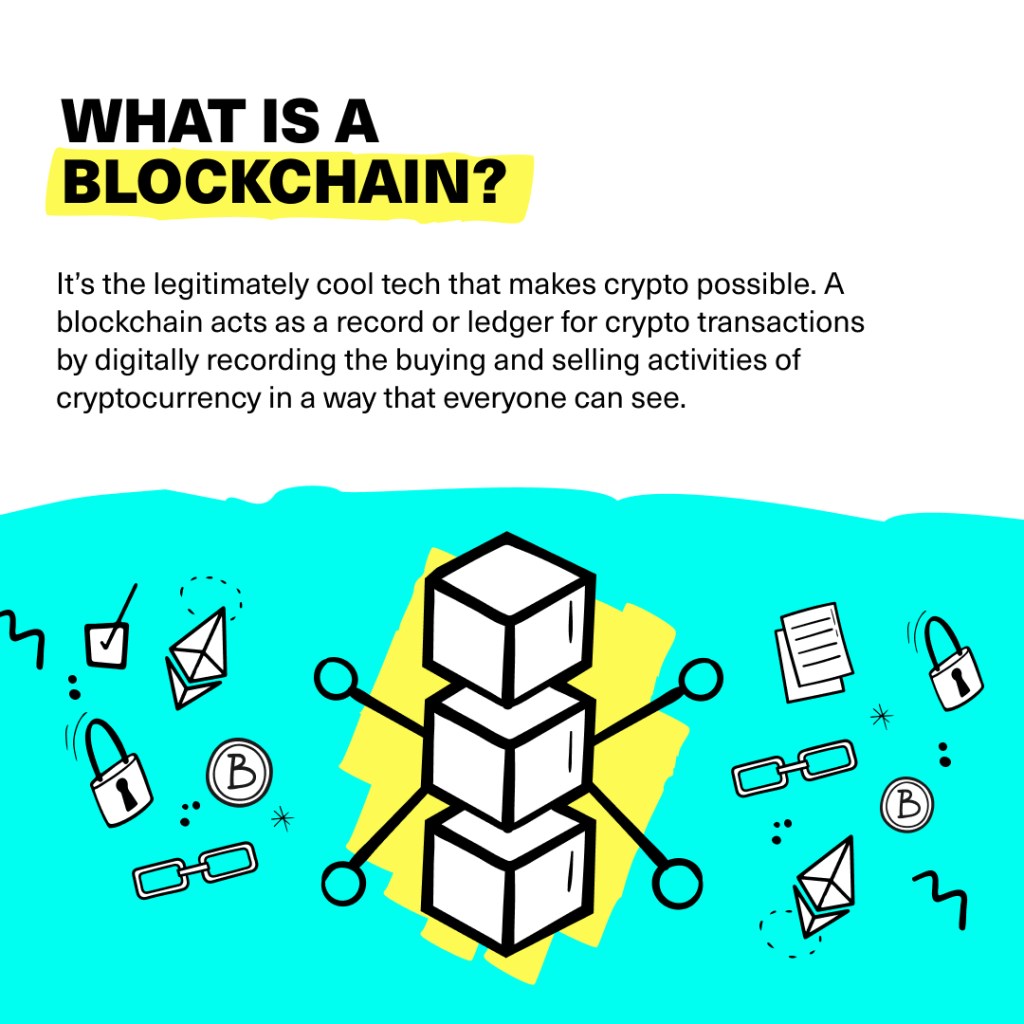
What is crypto mining?
Cryptocurrency mining is the process of generating new crypto coins and verifying transactions. Powerful computers compete to solve super-complex math problems, and the fastest one to do it gets the next “block” of bitcoins available.
It’s the competition for crypto that’s at the root of the huge consumption in electricity. As more people get into buying this kind of currency, demand goes up, and the miners with the fastest, most powerful (a.k.a. energy-consuming) computers mine coins the most effectively. When Bitcoin, the first cryptocurrency, was first invented in 2009, you could mine a Bitcoin on your PC. Now there are mining facilities the size of airplane hangars filled with supercomputers and high-powered GPUs (Graphic Processing Units) mining crypto 24/7.
DIY mining can still be done, but for many cryptocurrencies such as Bitcoin it may not be profitable to do at home without a professional mining rig and access to cheap electricity. However, for those that are interested in crypto mining, smaller cryptocurrencies such as Vertcoin (VTC) and Ravencoin (RVN) can be good options for hobby miners. Other coins like Banano (BAN) let you earn small sums of crypto while helping fight disease by running protein fold simulations on your computer.
What is a crypto wallet?
A crypto wallet is a software program or service that stores your cryptocurrency keys and lets you access your coins. Sometimes crypto wallets are hot. Sometimes they’re cold. No, this is not some kind of riddle. It’s just a description of the two kinds of cryptocurrency wallets where coins can be stored.
What is a hot wallet?
Hot wallets are crypto storage software programs that protect the keys you use to access your cryptocurrency account. Because they’re online, they are always connected to the internet and are more vulnerable to hackers and scammers. Some cryptocurrency exchanges give you a virtual wallet to use on their site when you open an account, while other wallet programs like Exodus or Mycelium can be downloaded for free. The majority of hot wallets come at no cost.
What is a cold wallet?
While hot wallets are software wallets, cold wallets are hardware wallets that store the digital keys to your account in a device that’s only connected to the internet when you’re making transactions (picture something like a thumb drive). This limited connectivity ups the security factor of this type of wallet, but there’s usually higher costs attached. Cold wallets, such as the Ledger Nano, typically go for between roughly C$65 and C$260.
Can you use cryptocurrency to buy things?
The whole point of any currency is to be able to exchange it for stuff you need or want. A bank account full of Canadian dollars, for example, wouldn’t be very useful if you couldn’t use some of those dollars to buy a new laptop for school or pay for a movie ticket on the weekend. So, can you use crypto the same way? Not quite—or not yet, at least. Which doesn’t mean you can’t buy some things with crypto. For example, you can purchase NFTs (that’s non-fungible tokens, and they’re one-of-a-kind or very limited-run items, often works of art, that exist primarily in the digital world). Some online retailers (often the kind that sell pretty expensive stuff, like luxury watches) also accept crypto. Tech companies like Microsoft accept purchases in crypto, and Canadian e-commerce platform Shopify is also equipped to let retailers accept crypto as a form of payment if they choose to.
Where can you use cryptocurrency?
While it might seem cool that you can buy a fancy watch online using crypto, it isn’t the most practical, everyday use for the technology (even millionaire Kylie Jenner probably doesn’t purchase a new Rolex on the regular). Crypto is probably at its coolest when you can use it for “normal” or daily needs…only we’re not quite there yet in Canada. However, you can use your crypto at online retailers that act as a kind of bridge between your currency and the thing you want to buy. For example, CoinGate lets you spend crypto on gift cards redeemable for Uber Eats, iTunes, Starbucks, and PlayStation. And Purse is a platform that lets you buy items from Amazon, while Twitch accepts Bitcoin payments.
Fast-food retailers like to flirt with the concept of crypto, it would seem, with a handful of Burger King and Subway stores across the globe accepting them (most, however, don’t).
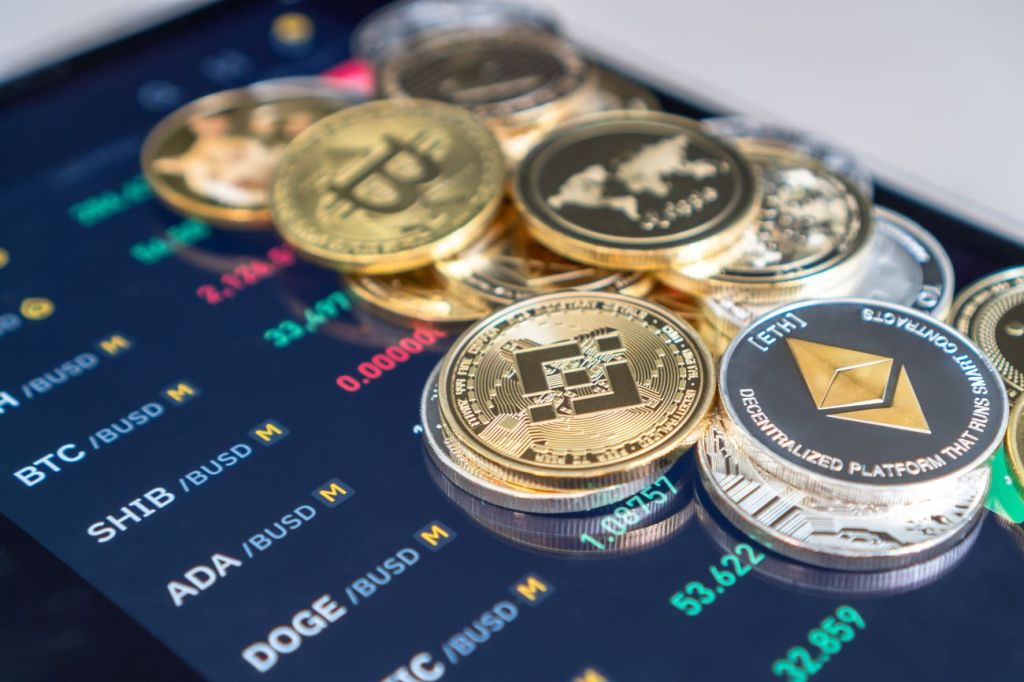
What are the main types of cryptocurrency?
Strap yourself in because there are a lot of different kinds of cryptocurrencies available on this wild ride we call the blockchain. The upside is, you don’t need to know all of them. The most popular crypto currencies by market cap are:
- Bitcoin (BTC)
- Ethereum (ETH)
- Binance Coin (BNB)
- Tether (USDT)
- Dogecoin (DOGE)
- U.S. Dollar Coin (USDC)
- Cardano (ADA)
- Ripple (XRP)
- Polygon (Matic)
- Solana (SOL)
- Litecoin (LTC)
These are some of the most well known coins in the crypto space. Keep in mind that each cryptocurrency has its own advantages and disadvantages when it comes to security, privacy, speed of transactions, scalability, and cost-effectiveness. It’s important to understand the differences between these various types in order to make an informed decision when investing in cryptocurrencies.
How can you buy cryptocurrency?
Purchasing your first crypto is a multi-step process. First, you need to acquire the tools to make the initial purchase: an account on a trusted crypto exchange, a wallet (hot or cold), and a means to purchase the coin (a.k.a. good old regular money). Beginners might also choose to buy crypto through a broker who makes transactions simple and easy to understand, but brokers sometimes charge more money (in the form of fees) to provide that extra help.
Due to KYC (know-your-client) laws, opening an account with a broker or an exchange will typically require you to verify your identity by proving you are who you say you are using a passport or driver’s licence (see below: There are age restrictions on who can buy crypto). Once you’re verified, you can add cash to your account (with a wire transfer, debit card, or credit card—but look out for additional fees here). After the deposit is processed, you can begin to buy crypto, choosing to store it in your hot or cold wallet.
How old do you have to be to buy cryptocurrency in Canada?
The short answer is: 18 years old. But there’s more to it than this seemingly simple rule. Because the short history of crypto and its fluctuating values are a story with more plot twists than the entire Marvel Cinematic Universe, trusted crypto exchanges and brokers require account holders to be at least 18 years old in this country. The policy is there to protect underage buyers from being scammed or taken advantage of.
For kids and teens interested in cryptocurrency, however, having a parent open an account can be a great way to learn about the technology as a team. Buying a small amount of currency and monitoring its rising or falling value—and even making a purchase together using crypto—could be a valuable experience in financial and tech literacy.
Is income gained from cryptocurrency taxable in Canada?
Absolutely. If you buy and sell cryptocurrency, the Canadian government is going to want to know about it when it comes time to file your taxes. And while holding onto crypto isn’t taxable, selling it, trading it, using it to buy goods and services, and converting it to Canadian dollars are. If you make a profit from the cryptocurrency you purchase (that is, if you sell it after its value goes up), then the government views that as a capital gain, and a portion of that gain is taxable.
Is cryptocurrency a good investment?
That depends on how you view the concept of an “investment.” In purely financial terms, crypto can be a volatile and unpredictable place in which to invest your hard-earned money (see: the jaw-dropping downturn that coins like Ether, Bitcoin, and Dogecoin experienced in May 2022, losing between 33 per cent and 45 per cent of their value in—*checks calendar*— a week). However, if you think about experimenting with crypto as an investment in learning (about blockchain, the future of financial platforms, and investment products in general), then setting aside a conservative amount of money to buy some currency and learn about the way the crypto industry works are ways to increase and broaden your own financial literacy—which is never a bad investment.
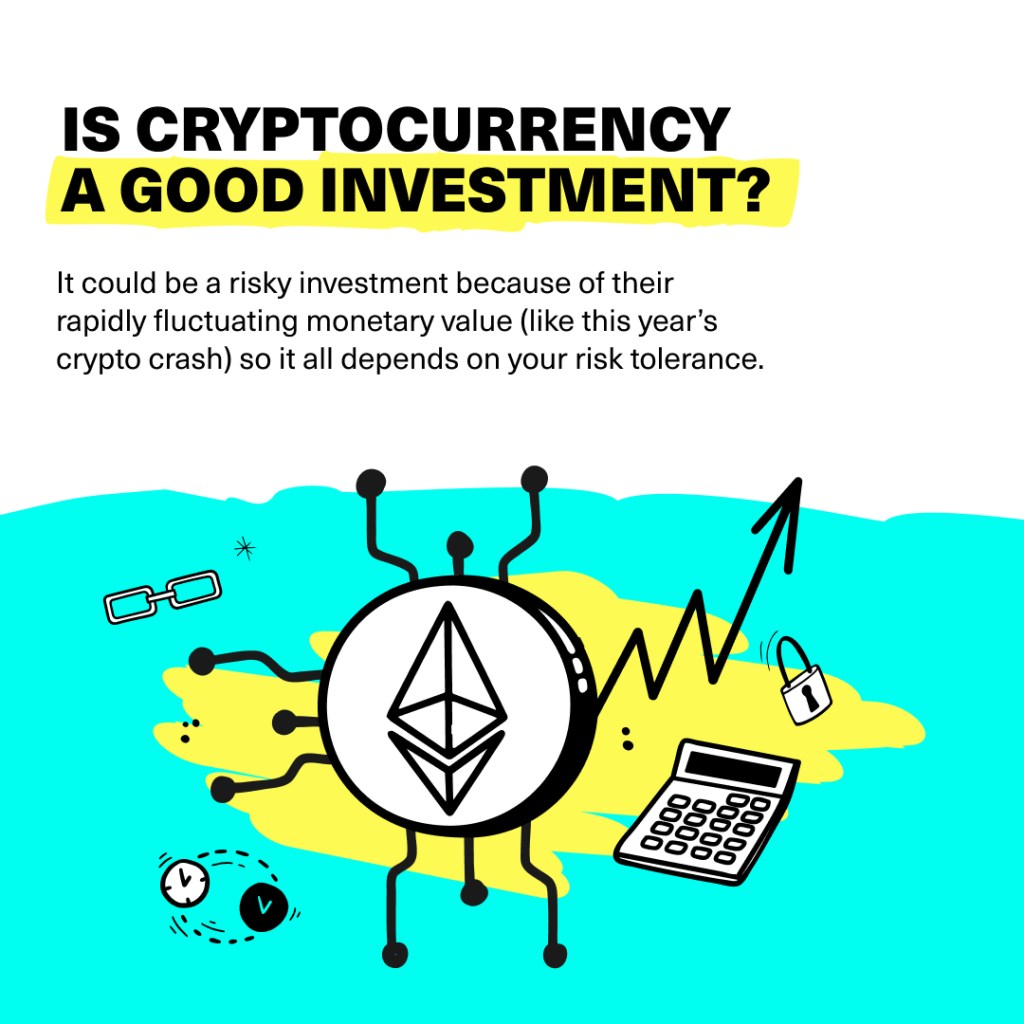
Next steps for teenagers interested in cryptocurrency and investing
The world of cryptocurrency is still evolving and has the potential to grow and expand in many directions in the near future. While it may not be the best or most secure place to invest a pile of money right now, it does present both kids and parents with an educational opportunity in the space where finance and technology intersect.
With support from trusted sources like Mydoh, navigating the changing landscapes of money and finance alongside your kids can be as simple as a click and a conversation.
Download Mydoh and help build the foundation of financial literacy for your kids and teenagers.
This article offers general information only and is not intended as legal, financial or other professional advice. A professional advisor should be consulted regarding your specific situation. While the information presented is believed to be factual and current, its accuracy is not guaranteed and it should not be regarded as a complete analysis of the subjects discussed. All expressions of opinion reflect the judgment of the author(s) as of the date of publication and are subject to change. No endorsement of any third parties or their advice, opinions, information, products or services is expressly given or implied by Royal Bank of Canada or its affiliates.


